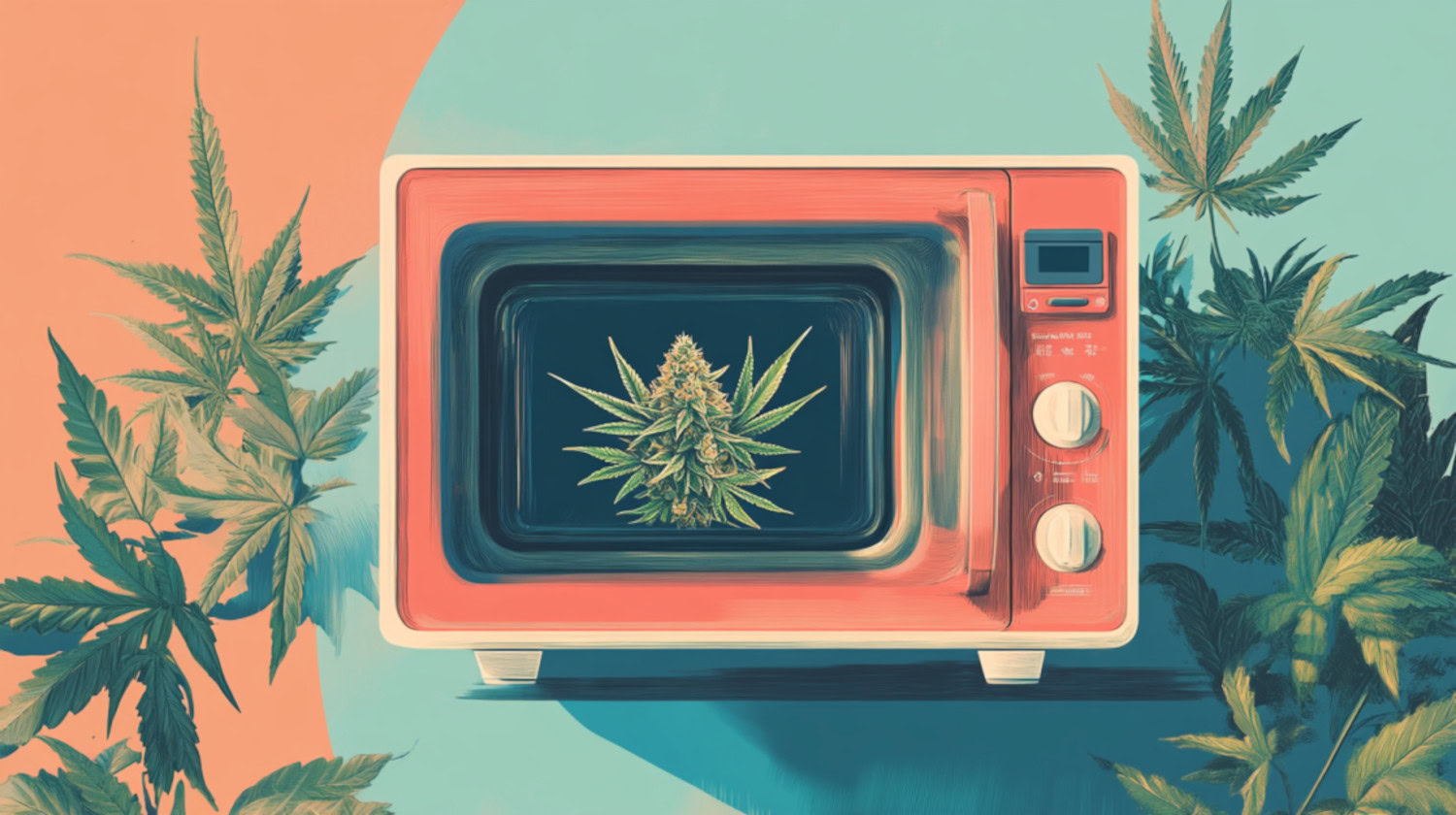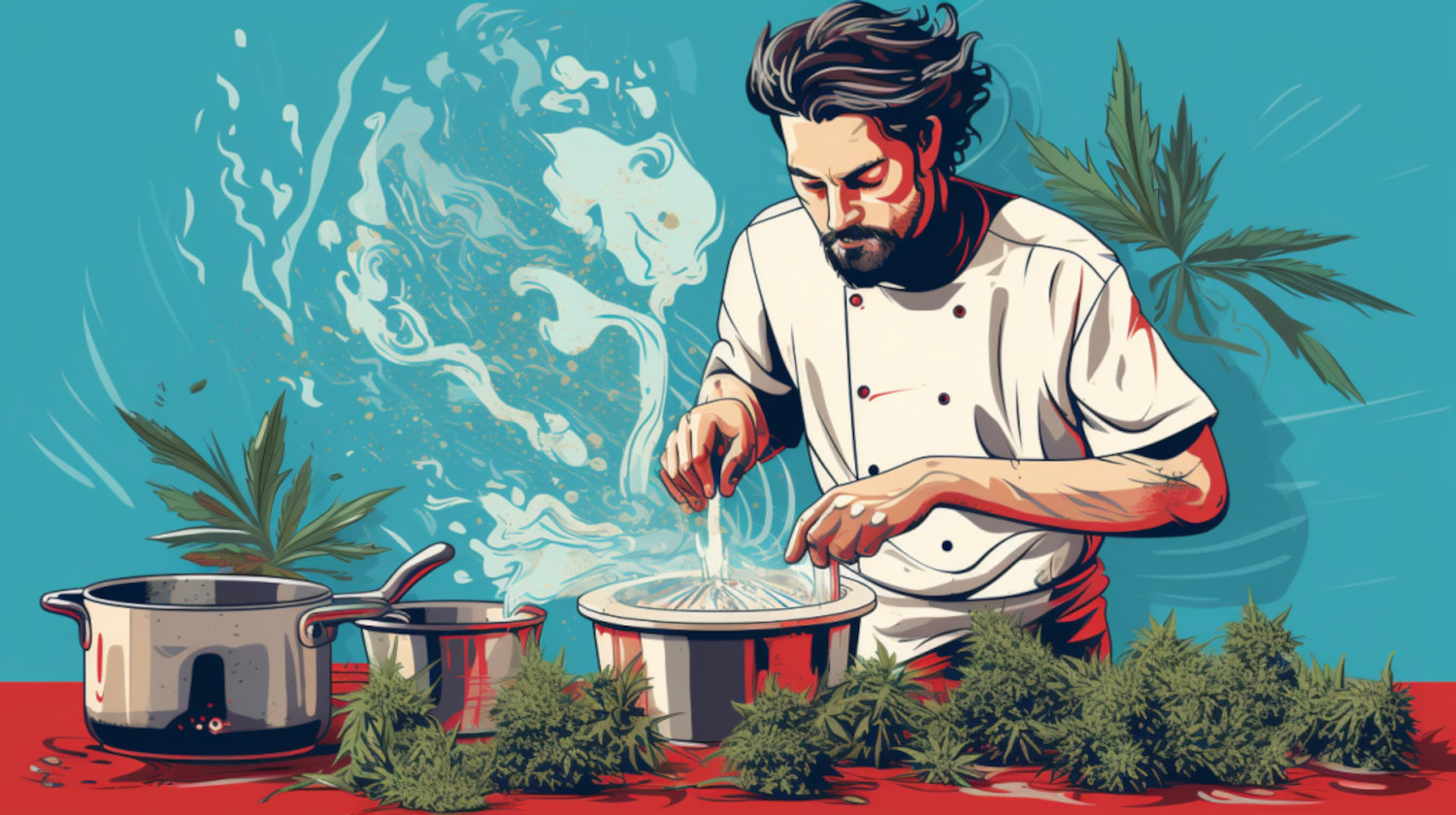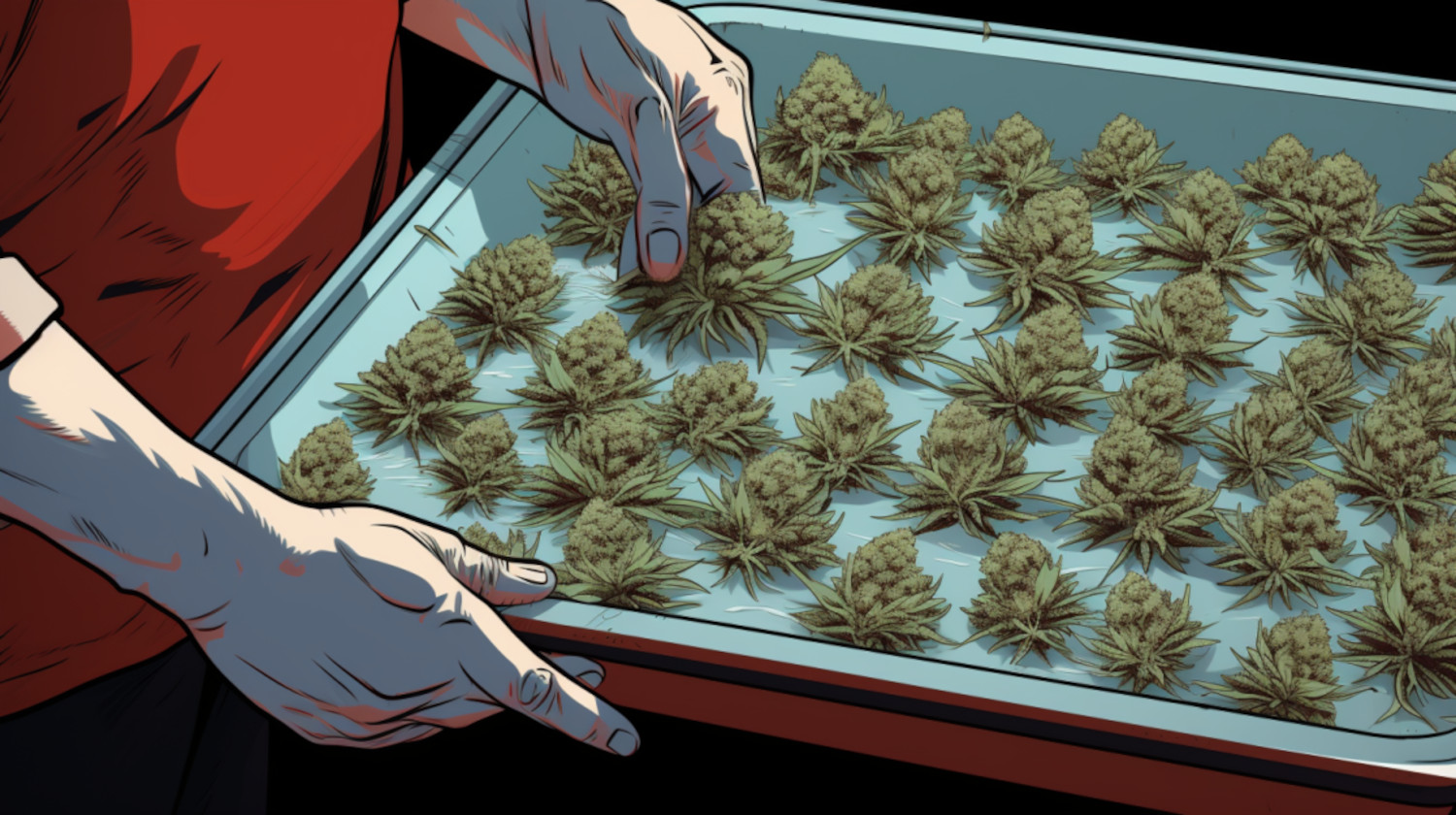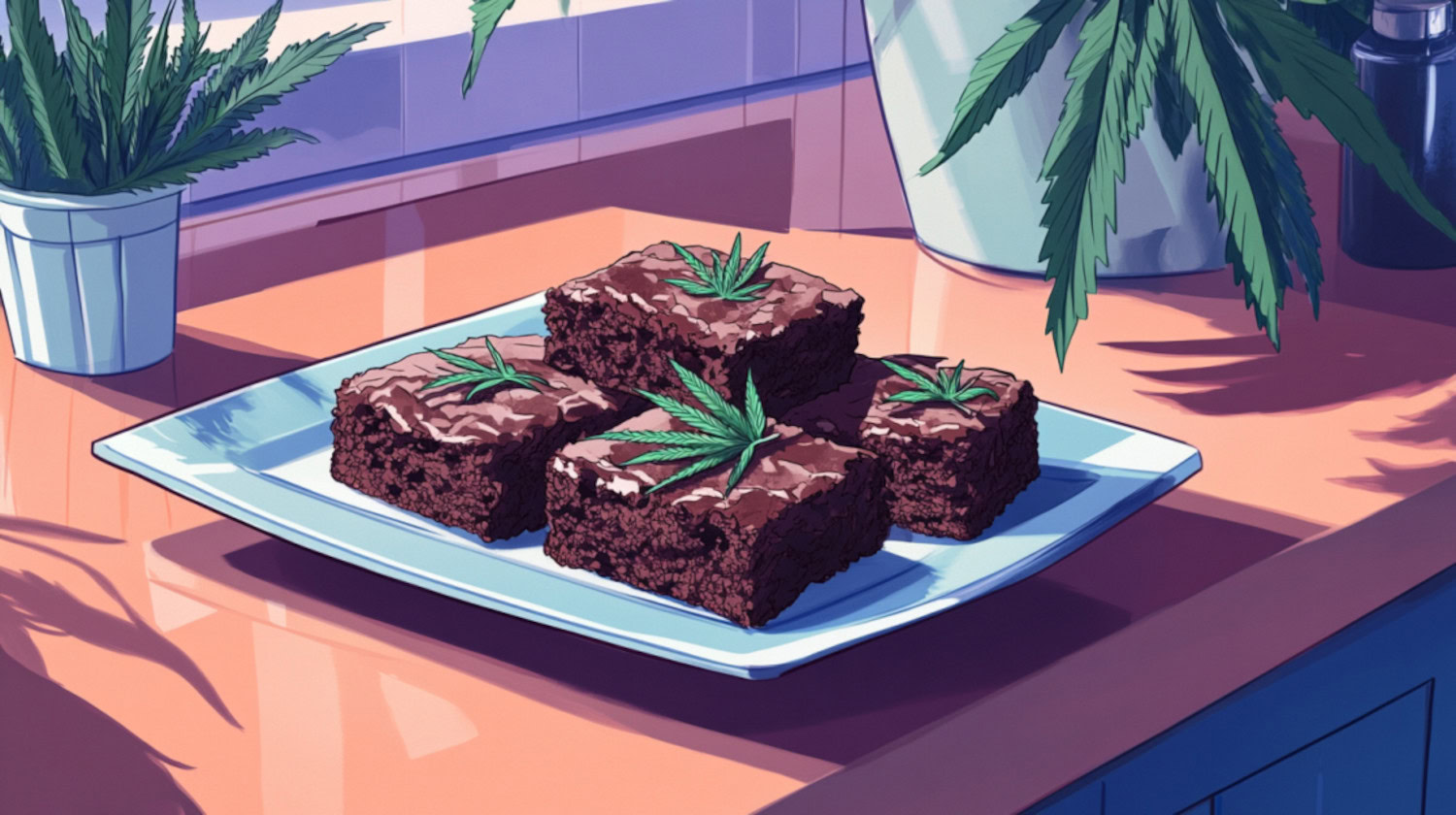In This Article
Key Takeaways
- Microwaving cannabis does not reliably increase potency or improve quality.
- Traditional methods like oven decarboxylation or a dedicated decarbing device are the most effective.
- Proper decarboxylation requires controlled, consistent heat—conditions that microwaves cannot guarantee.
The microwave is a kitchen staple, used for decades for rapidly reheating meals, warming drinks, and several other daily kitchen needs. However, putting weed in the microwave isn't a great method for decarboxylation.
The effort often leads to unwelcome outcomes, such as uneven heating, terpene loss, and cannabinoid degradation, which reduce the plant's overall potency and flavor.
Sticking to proven cannabis decarbing methods is advised. Whether attempting to make edibles, improve plant flavor, or activate essential cannabinoids, controlled heat methods, like using an oven or cannabis-specific tech, are the most reliable choices.
While curiosity might inspire a few to try putting weed in the microwave for some reason, they’ll likely find that the drawbacks outweigh any potential benefits.
Heat in Cannabis
Applying heat to raw cannabis flower starts a chemical process called decarboxylation, or decarbing. Prior to heating, the primary cannabinoid found in flower isn’t THC, but THCA. This non-intoxicating cannabinoid converts into THC through decarbing, which can occur over time or be instantly triggered via heat, including but not limited to a fire from a lighter or torch.
Over recent years, decarboxylation methods and devices have been identified, both relying on controlled temperatures and even heating. The innovative step came decades ago via an oven set at a low, steady temperature. As legalization spread, so did cannabis-specific decarbing equipment. While different in many ways, both options are proven effective at preserving cannabinoid and terpene content while activating THC.
Considering Microwaving Weed
With cannabis, replacing an oven with a microwave introduces significant otherwise avoidable variables:
- Inconsistent Heating: Microwaves don’t heat evenly. Because cannabis flowers lack uniform moisture, some parts can overheat in the microwave, while others remain underheated, ruining the quality of the flower.
- Flavor and Quality Loss: Some cannabis may convert to THC in the microwave, but it may also burn in the process–much like an overheated piece of popcorn. The result is a harsh, unpleasant taste that can reduce or eliminate the plant’s potency.
Does Microwaving Cannabis Make It Stronger?
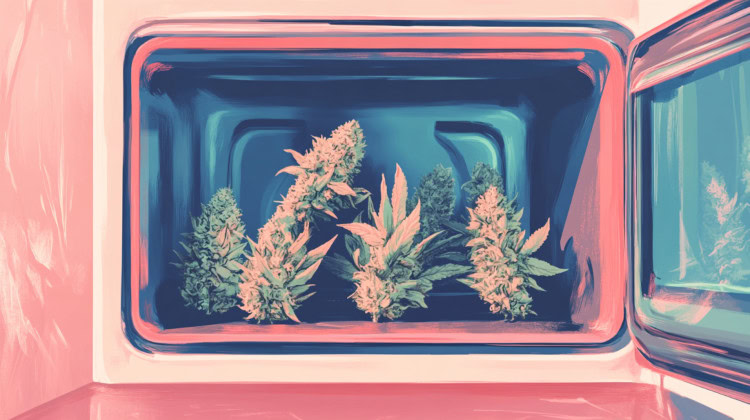
In rarer cases, perhaps. But more often than not, the microwave will not enhance plant potency.
Since heat is integral to converting THCA into THC, some may assume that quick, intense heat boosts potency and promotes efficient decarbing. But that’s not accurate. Proper decarboxylation requires heating cannabis at low temperatures, gradually increasing over time, approximately 30-45 minutes in many cases.
Blasting buds with microwave temperatures often negates any of the bud’s qualities by rapidly, and sometimes excessively, heating the plant.
Can You Decarboxylate Weed in the Microwave?
Can you? Yes.
Should you? No.
In theory, any heat source can create decarboxylation. From sunlight to oven lights, these can convert THCA to THC. But, as the evidence suggests, not every option delivers equal results.
Microwaving lacks the control and/or consistent heating needed for decarbing. Further, a microwave cannot hold the low, steady temperature required to activate THC without diminishing its quality.
A few seconds of microwaving may work without burning the bud. But that time will not likely fully decarb the cannabis.
What Effect Does Microwaving Cannabis Have?
Microwaving does not reliably increase potency or properly decarb cannabis. It ruins otherwise good flower, specifically:
- Dries It Out: Microwaves rapidly evaporate moisture, leaving overly dry cannabis in some areas of the bud or in its entirety. The result is a harsh-to-smoke flower lacking flavor and THC.
- Degrading Cannabinoids: Uneven heating may lead to partial decarboxylation and/or overheating, leading to degraded cannabinoid content and reduced potency.
- Altered Taste: A microwave can scorch critical plant compounds, like terpenes, producing unwelcomed flavors.
What Does Putting a Blunt in the Microwave Do?
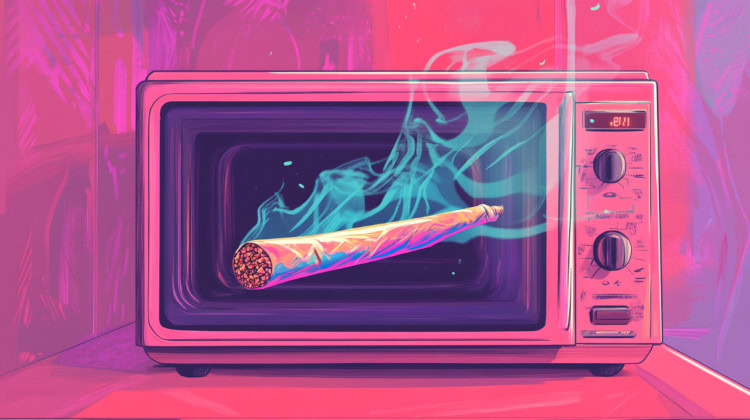
Many like to microwave their blunts for just a couple of seconds, believing it helps dry out the wrap prior to smoking. Additionally, some believe the microwave helps create a prolonged burn on the blunt.
While the microwave may help, the risks run high, including:
- Ruined Wrap: A microwave can quickly over-dry the wrap or paper, making it brittle and prone to cracking.
- Reduced Flavor: Just like overheating flower in the microwave, scorching the cannabis inside the blunt will eliminate terpenes, reducing any effect and flavors intended.
- No Significant Potency Gain: Some may suggest that a microwave can enhance potency, but most findings indicate otherwise.
What about microwaving a joint?
Microwaving a joint is likely to burn and torch the flower.
Can You Decarb Wax in the Microwave?
Wax should not go in the microwave. Like flower, concentrates require precise heating to activate the THC without risking degradation. The microwave’s uneven heat and inability to maintain a low, steady temperature make it a lackluster choice.
Tips for Safely Heating Cannabis
The primary tip should always be don’t microwave any cannabis products. Instead of a microwave, consider these tips and techniques to help convert THCA to THC without risking any reduction in plant quality or ruining the overall experience:
- Use an Oven for Decarboxylation: Placing cannabis on a baking sheet at around 220-245°F for 30-45 minutes has been a relied-upon method for decades.
- Invest in a Decarboxylation Tool: Specialized devices help assure consistent temperatures while removing the guesswork from the process.
- Store Cannabis Properly: If moisture or dryness is the concern, proper storage methods work better than random heating approaches. Even if they aren’t, storing cannabis in a cool, dark place away from the elements helps keep cannabis fresh for as long as possible.
- Don’t Rush the Process: Shortcuts like the microwave rarely work out, if ever.
FAQ

What does putting a blunt in the microwave do?
Microwaving a blunt can dry out the wrap and degrade cannabinoids and terpenes, offering no potency gain and likely resulting in a harsher, less enjoyable smoke.
What happens if weed is exposed to heat?
Heat converts THCA to THC through decarboxylation, making cannabis intoxicating. However, only controlled, moderate heat preserves potency and flavor. Too much or uneven heat leads to cannabinoid degradation and terpene loss.
Can you decarb wax in the microwave?
Decarbing wax in a microwave is not recommended. Like flower, wax requires precise, controlled heat, and a microwave’s uneven high-intensity heating risks destroying cannabinoids and terpenes.
What happens if weed is cooked too hot?
Cooking weed too hot degrades THC into less potent compounds, eliminates terpenes, and produces harsh smoke with weaker effects. It is best to avoid extremely high heat and maintain control over the temperature.
The information in this article and any included images or charts are for educational purposes only. This information is neither a substitute for, nor does it replace, professional legal advice or medical advice, diagnosis, or treatment. If you have any concerns or questions about laws, regulations, or your health, you should always consult with an attorney, physician or other licensed professional.

